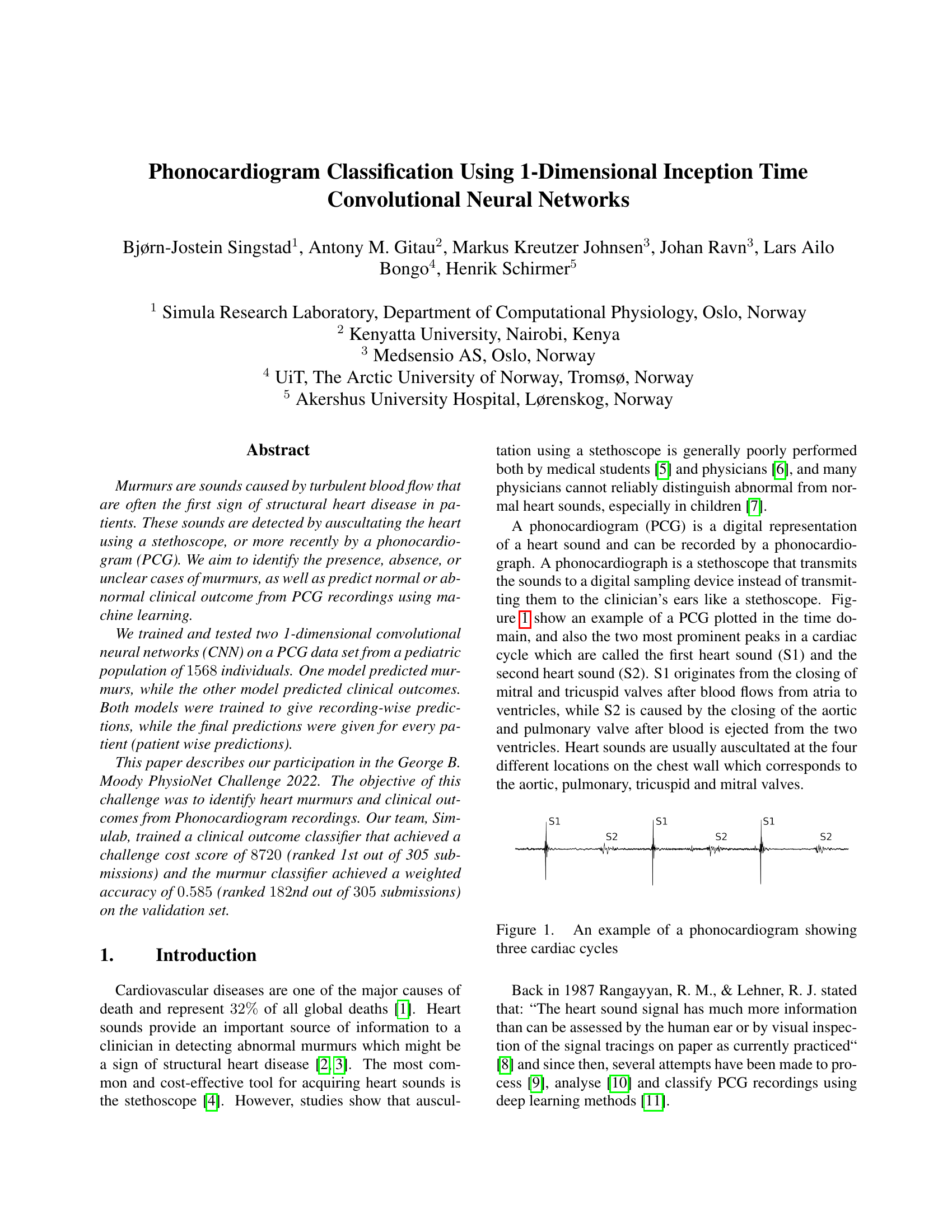Command Palette
Search for a command to run...
Phonocardiogram Classification Using 1-Dimensional Inception Time Convolutional Neural Networks
{Henrik Schirmer Lars Ailo Bongo Johan Ravn Markus Kreutzer Johnsen Antony M. Gitau Bjørn-Jostein Singstad}

Abstract
Murmurs are sounds caused by turbulent blood flow that are often the first sign of structural heart disease. These sounds are detected by auscultating the heart using a stethoscope, or more recently by a phonocardiogram (PCG). We aim to identify the presence, absence, or unclear cases of murmurs, as well as predict normal or abnormal clinical outcome from PCG recordings using machine learning. We trained and tested two 1-dimensional convolutional neural networks (CNN) on a PCG data set from a pediatric population of 1568 individuals. One model predicted murmurs, while the other model predicted clinical outcomes. Both models were trained to give recording-wise predictions, while the final predictions were given for every patient (patient-wise predictions).This paper describes our participation in the George B. Moody PhysioNet Challenge 2022 whose objective was to identify heart murmurs and clinical outcome from PCGs. Our team, Simulab, trained a clinical outcome classifier that achieved a challenge cost score of 12419 (ranked 14th out of 39 teams) and the murmur classifier achieved a weighted accuracy of 0.593 (ranked 30th out of 40 teams) on the test set.
Benchmarks
| Benchmark | Methodology | Metrics |
|---|---|---|
| classify-murmurs-on-circor-digiscope | Inception Time | Weighted Accuracy: 0.593 Weighted accuracy (cross-val): 0.497±0.083 Weighted accuracy (validation): 0.522 |
| predict-clinical-outcome-on-circor-digiscope | Inception Time | Clinical cost score: 12419 Clinical cost score (cross-val): 12315±903 Clinical cost score (validation data): 8720 |
Build AI with AI
From idea to launch — accelerate your AI development with free AI co-coding, out-of-the-box environment and best price of GPUs.